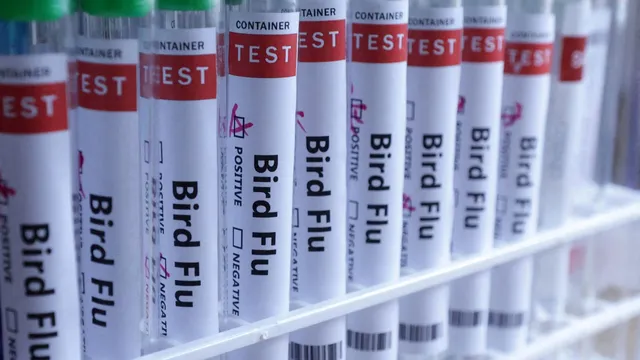
Bird flu found in sheep for the first time in England
2025-03-25 00:00- Avian influenza H5N1 was confirmed in a sheep during routine checks on a Yorkshire farm.
- Strict biosecurity measures are now in place to prevent further spread of the virus among livestock.
- The government's swift response emphasizes the need for vigilance among farmers and the general public.
Express your sentiment!
Insights
In England, the presence of avian influenza was confirmed in a sheep for the first time, marking a significant event in the ongoing monitoring of diseases affecting livestock. This case was identified during routine surveillance on a farm in Yorkshire, where the H5N1 virus had previously been detected in captive birds. Following this discovery, the infected sheep was humanely culled to facilitate extensive testing, and no further infections were found in the remaining flock. The UK government and veterinary officials are urging livestock owners to implement strict biosecurity measures and remain vigilant for any signs of infection. The impact of bird flu on livestock has been a growing concern globally, particularly as infections have been reported in various mammalian species, including foxes and seals, in addition to birds. Experts have noted that while the risk to livestock remains low, this incident emphasizes the need for good hygiene practices on farms and the importance of separating different species to minimize the risk of disease transmission. In the face of the ongoing outbreaks, both the UK Health Security Agency (UKHSA) and the Department for Environment, Food and Rural Affairs (DEFRA) have reiterated that the general public's risk remains very low. They caution people against touching dead or sick wild birds, as this could potentially spread the virus. The authorities are closely monitoring the evolving situation to ensure animal health safety and are prepared to take swift action should human cases arise in connection with this bird flu variant. With previous cases of avian influenza noted in various animals, the situation highlights the interconnectedness of wildlife and livestock health. The UKHSA has indicated that they will continue to coordinate with relevant health and agricultural agencies to monitor developments, especially given the history of avian influenza being a significant threat in other parts of the world. The situation remains under observation as experts analyze the infected sheep to determine the nature of the virus present and evaluate the potential for future outbreaks.
Contexts
Avian influenza, commonly known as bird flu, is a viral infection that primarily affects birds but can also infect humans and other animals. The transmission of avian influenza between species is a critical area of research due to its implications for public health and agriculture. Understanding how avian influenza spreads between different species, including humans, is key to preventing outbreaks and managing the disease effectively. The primary mode of transmission occurs through direct contact with infected birds, their saliva, nasal secretions, or feces. Domestic poultry, such as chickens and turkeys, can become infected by exposure to wild birds, particularly waterfowl, which often carry the virus without showing symptoms. The virus can spread rapidly among birds in crowded conditions, making commercial poultry farms particularly vulnerable to infection. Moreover, the virus can survive for long periods in the environment, further facilitating its spread among avian populations. In addition to direct contact, avian influenza can be transmitted indirectly through contaminated feed, equipment, or clothing from humans who have come into contact with infected birds. When humans are involved, the risk increases during activities such as handling infected birds or visiting poultry farms. Human infections with avian influenza are rare but can occur, particularly with certain strains like H5N1. These infections can lead to severe respiratory illness, and human-to-human transmission is infrequent. However, certain mutations in the virus may enhance its ability to spread between humans, raising concerns about potential pandemics. Surveillance of human cases, especially in regions where avian influenza is endemic, is critical to monitoring potential changes in the virus's transmissibility. Environmental factors also play a significant role in the transmission of avian influenza. Waterfowl migrations and their subsequent interactions with domestic poultry can lead to outbreaks. Regions with high bird populations, such as wetlands and marshes, serve as hotspots for the virus. Changes in climate, habitat destruction, and agricultural practices may influence bird migration patterns and, consequently, the spread of avian influenza among species. Public health authorities often monitor these environmental conditions to predict potential outbreaks and implement biosecurity measures to mitigate the risks. Preventive measures to control the spread of avian influenza between species include vaccination, biosecurity protocols on poultry farms, and public awareness campaigns to educate bird handlers and the general public on the risks of infection. It is essential for countries to collaborate on surveillance efforts and share information on outbreaks to enhance global preparedness against this zoonotic disease. Understanding the mechanisms of transmission not only helps in controlling outbreaks but also in developing effective vaccines and treatment options, ultimately protecting both human and animal populations from avian influenza.